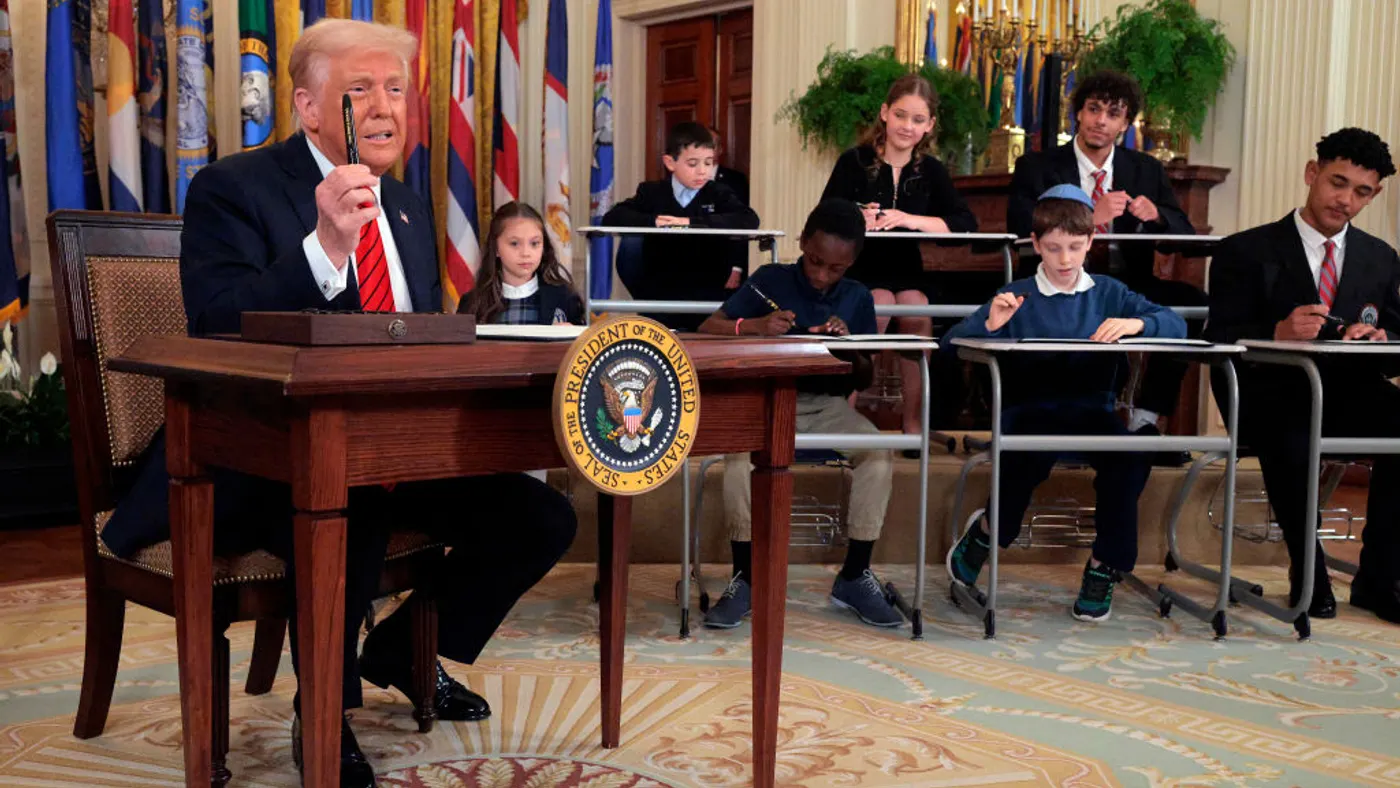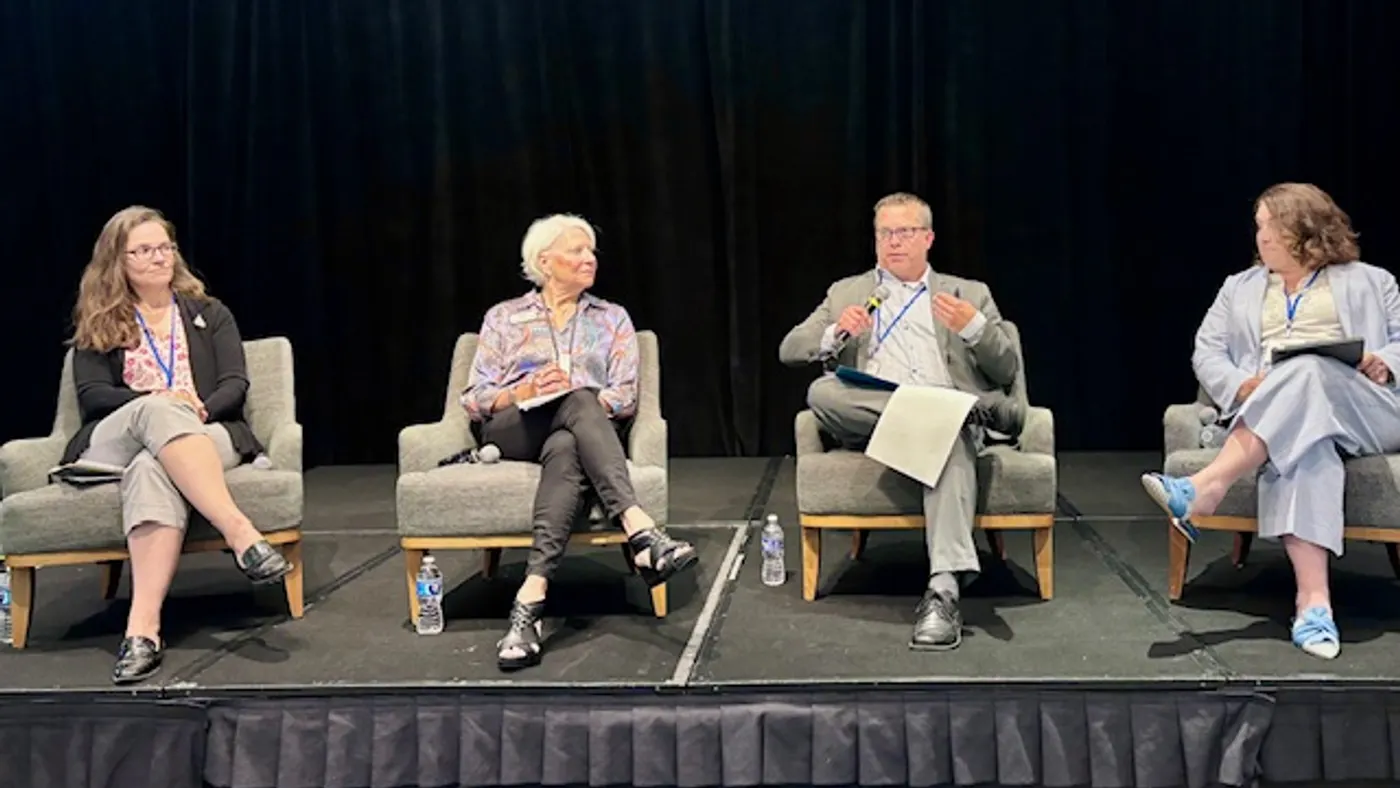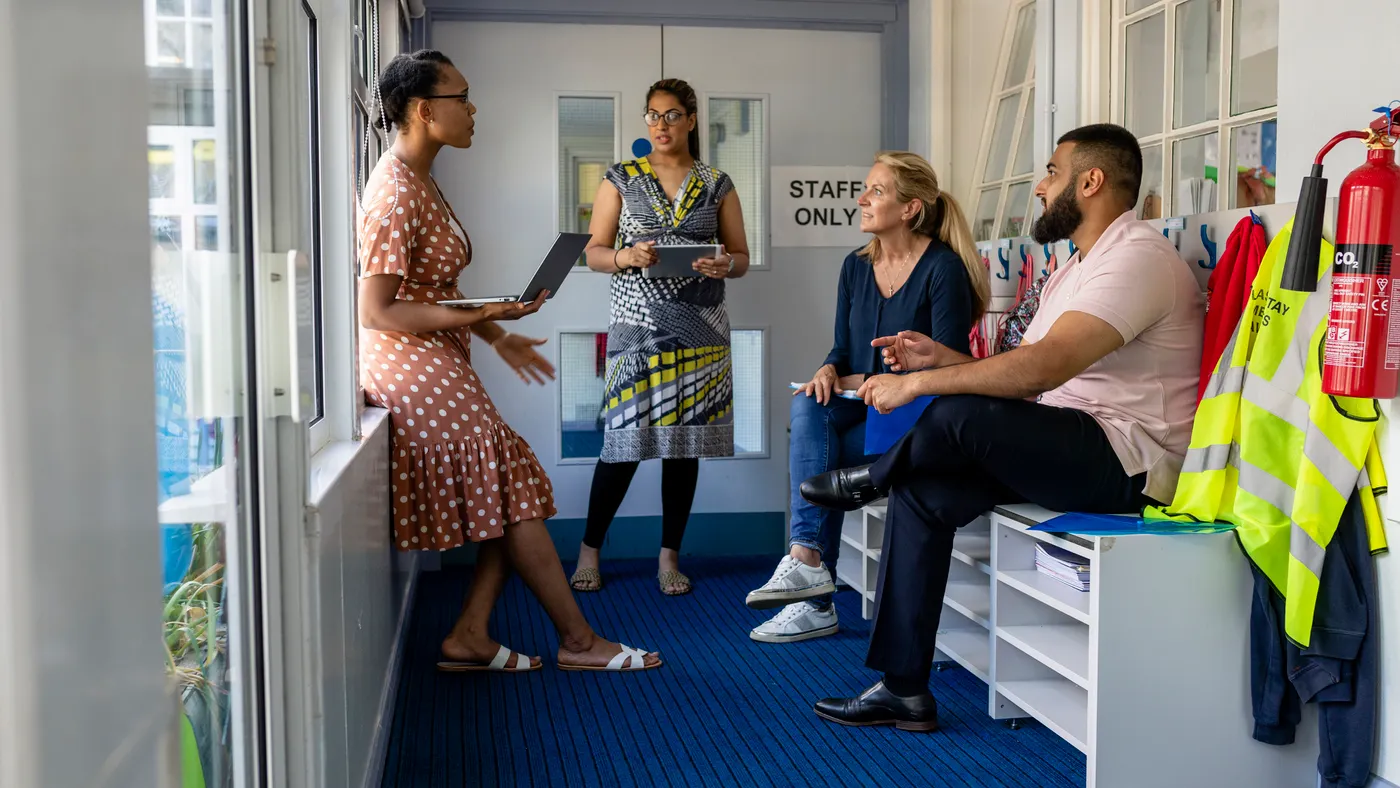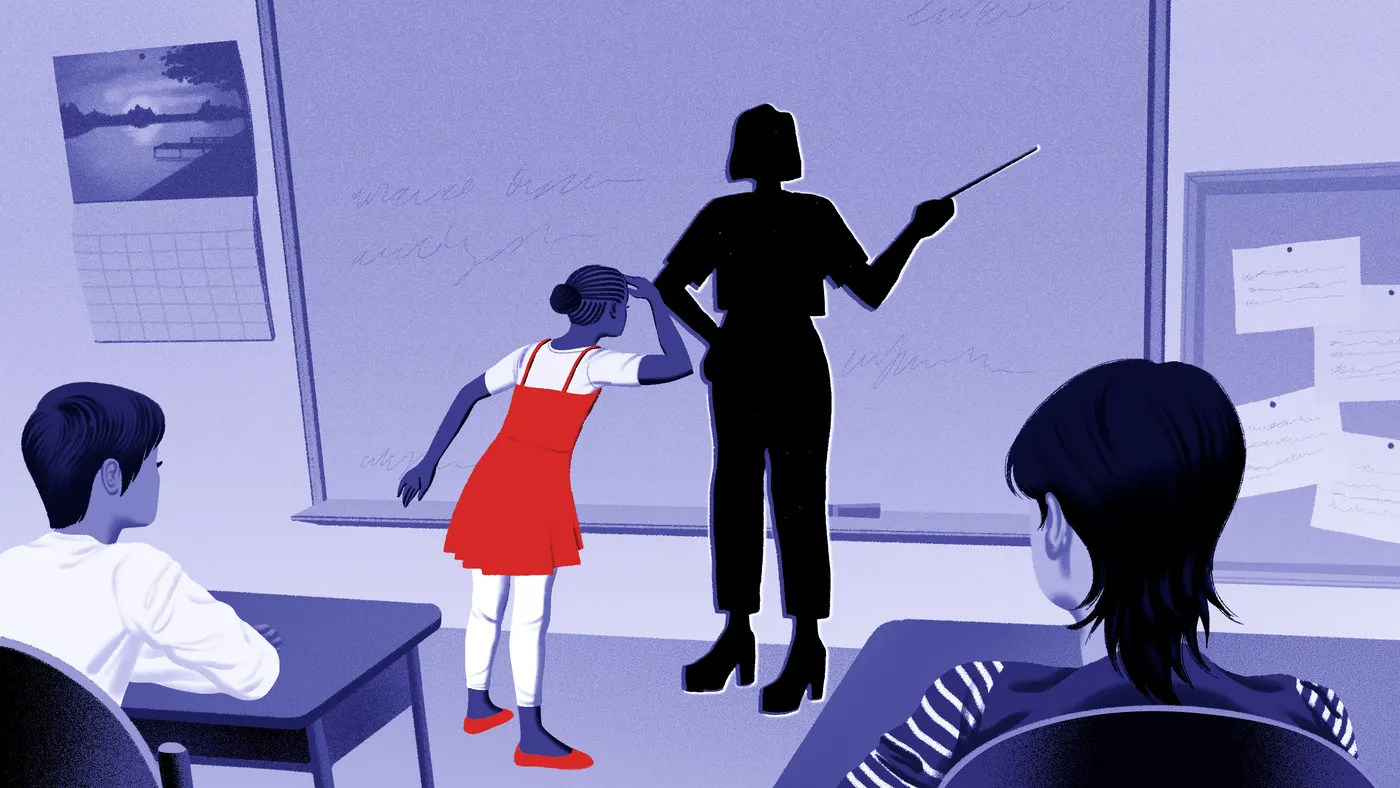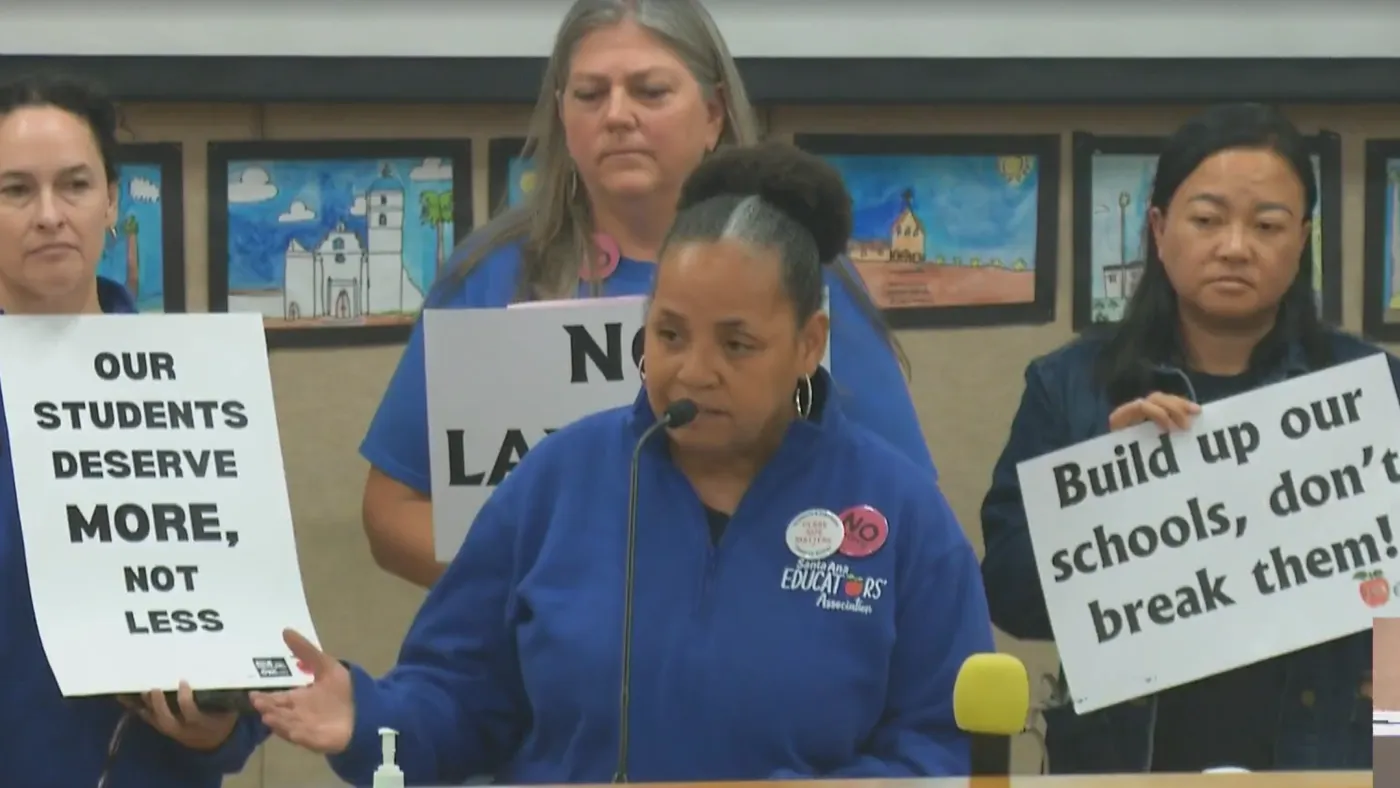By: Anna Merod
• Published June 20, 2025
With diversity, equity and inclusion efforts facing scrutiny under the Trump administration, school districts and states looking to diversify their teacher workforces are in a precarious situation.
Nearly a month into President Donald Trump’s second term, for instance, the U.S. Department of Education slashed $600 million in “divisive” teacher training grants — specifically through the Teacher Quality Partnership Program and the Supporting Effective Educator Development Grant Program. The department said in February that those cuts were made to grants that “included teacher and staff recruiting strategies implicitly and explicitly based on race.” Advocates for the federal grants said the decision particularly impacted funding for programs aiming to improve teacher diversity in classrooms.
For years, there’s been a push for more policies to support the recruitment and retention of teachers of color as the nation’s K-12 public school student population grows more racially diverse and as teacher shortages persist. Advocates often point to research that shows when schools hire teachers who look like their students — particularly students of color — student achievement improves and disciplinary rates go down.
While research from the National Council on Teacher Quality found that teacher diversity slowly grew between 2014 and 2022, those findings also suggested that teachers of color are opting out of careers in education as teacher diversity lags behind the rate of the broader workforce.
But with the U.S. Supreme Court’s 2023 ruling that repealed race-conscious admissions in higher education and the Trump administration's ongoing push against DEI, some experts advise districts and states to be cautious when approaching teacher diversity efforts moving forward. On the flip side, advocates say the need for these initiatives remain.
A ‘scary’ time for teacher diversity initiatives
Before Modesto City Schools began its teacher workforce diversity partnership with California State University, Stanislaus, there was a “mismatch” in representation between students of color and teachers of color in its elementary schools, said Shannon Panfilio-Padden, an associate professor at the university’s college of education.
During the 2021-22 school year, elementary enrollment for students of color in Modesto City Schools could range from 60% in some buildings to as much as 98% in others. That’s compared to the range of 13% to 66% among elementary teachers of color in the district, said Panfilio-Padden, who helped oversee the partnership between the district and university. “What Modesto had been working on for years was diversifying their teacher workforce, but no matter what they tried, it wasn’t working.”
By improving collaboration and identifying workforce barriers with Modesto City Schools, CalState Stanislaus — which has a majority Hispanic student population — was able to double the number of candidates who are teachers of color, from 6 to 16, who entered the district’s classrooms between the 2021-22 and 2023-24 school years, said Panfilio-Padden.
The partnership was spurred through CalState’s Center for Transformational Educator Preparation Programs, which aims to boost recruitment and retention of teachers of color to serve California’s diverse student population.
At a time when such initiatives are being targeted at the federal level, Panfilio-Padden said “it can be scary.” But, she said, she's dedicated to supporting her students, who are aspiring teachers from diverse backgrounds.
“We need teachers so desperately in California, and we need highly qualified teachers,” she said. Panfilio-Padden said the university can't predict the amount of federal aid or state grant money that will be available to aspiring teachers, but “at the same time, when they continue to come to us with an enthusiasm to teach elementary kids, it just puts everything into perspective.”
Meanwhile, on the other side of the country, Massachusetts enacted the Educator Diversity Act in November 2024 as part of the state’s economic development package. The legislation looks to address barriers to recruiting and retaining educators of color by allowing multiple pathways for teacher certification, creating a statewide dashboard for tracking educator workforce diversity at the district level, and increasing uniformity in hiring practices to support candidates from underrepresented backgrounds.
Students of color make up more than 45% of public school enrollment in Massachusetts, while only 10% of teachers in the state are people of color, according to Latinos for Education, a nonprofit advocacy group that supported the Educator Diversity Act.
The Educator Diversity Act is “going to help all communities” and not just aspiring educators of color, because the legislation creates more equitable opportunities to enter the teaching profession — and that ultimately benefits everyone, said Jorge Fanjul, executive director for the Massachusetts chapter of Latinos for Education. If the law included a quota based on race, that would be discriminatory, he said, but that’s not the case here.
While Fanjul said he’s hopeful about the efforts to improve teacher diversity in Massachusetts, parts of the broader movement in the U.S. “may be wounded” because of the Trump administration's anti-DEI policies.
Elsewhere, a 33-year-old Illinois state law aiming to boost teacher diversity, known as the Minority Teachers of Illinois Scholarship Program, is being challenged in court by public interest law firm Pacific Legal Foundation, which claims the program discriminates against nonminorities. A motion to dismiss the case is still pending in the U.S. District Court for the Central District of Illinois.
Since the program’s beginnings in 1992, 13,000 scholarships have been awarded to aspiring teachers through the Minority Teachers of Illinois Scholarship Program, said Bravetta Hassell, director of communications for Advance Illinois, an organization that supports the state’s scholarship program.
Applicants must be a minority student to receive the scholarships, which are “intended to help diversify the teaching pool and provide a supply of well-qualified and diverse teachers for hard-to-staff schools,” according to the program’s website.
Over the last decade, teaching candidates of color have jumped from 20% to 36% in Illinois, Hassell said. That’s not enough, considering over half of all K-12 public school students in the state are students of color compared to just 18% of the state’s teachers being educators of color, she added.
‘Tread carefully’
The lawsuit challenging MTI alleges that not allowing nonminority students to receive a scholarship on the basis of race is a violation of the equal protection clause of the 14th Amendment. For Erin Wilcox, senior attorney at Pacific Legal Foundation, MTI is a pretty clear example of a government program that gives out a benefit based on race.
Since the Supreme Court’s ruling against race-based admissions practices in 2023, Wilcox said, courts are starting to implement a stricter standard for when the government can discriminate on the basis of race for many different programs.
The latest challenge against the MTI program “is one more example of how states have really got to take a hard look at their laws and start cleaning up their act” as they approach similar programs that promote teacher diversity, Wilcox said.
“The race-based programs, ones that specifically admit or exclude applicants based on their race, I think those are on a collision course with the U.S. Constitution. I think it’s unavoidable,” Wilcox said.
While schools “desperately” need teachers nationwide, Wilcox said, districts and states need to continue encouraging people to become teachers — but “you can’t do it based on the race of the person who’s applying for your program.”
Though there’s promising research on the importance of having a diverse teaching staff, districts should “tread carefully,” on teacher diversity initiatives, which are now increasingly at risk of potential legal scrutiny, said Mike Petrilli, president of the Thomas B. Fordham Institute, a nonprofit education policy think tank.
Districts have to make sure their policies and practices don’t discriminate against Black or Hispanic teachers, Petrilli said. While they seek to expand their pipeline to include those candidates, districts must also avoid discriminating against White or Asian teachers. Rather, he said, the district workforce strategy should be “opening the door to everybody.”
The point, Petrilli said, should be, “How can we get as close to a non-discriminatory approach and a non-biased approach as possible, and can that help us improve our diversity?”
Article top image credit: Illustration: Cathryn Virginia for Industry Dive
